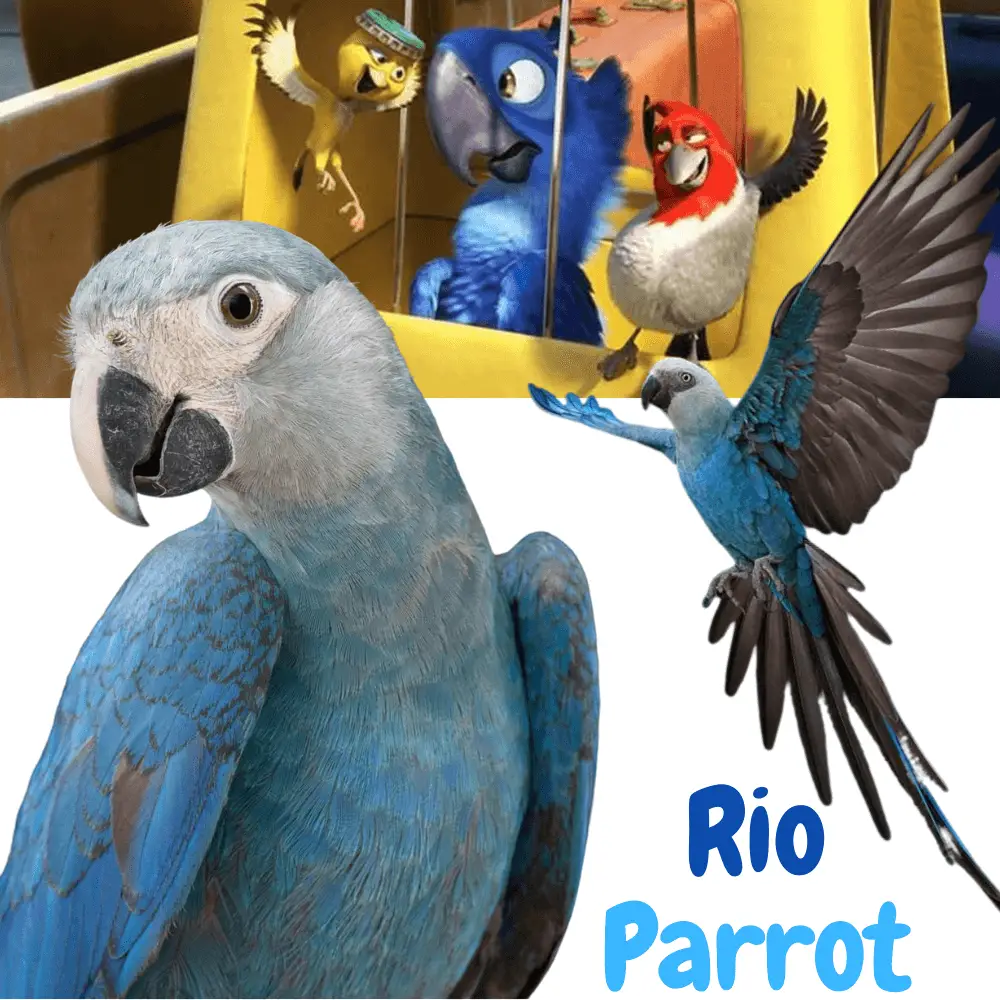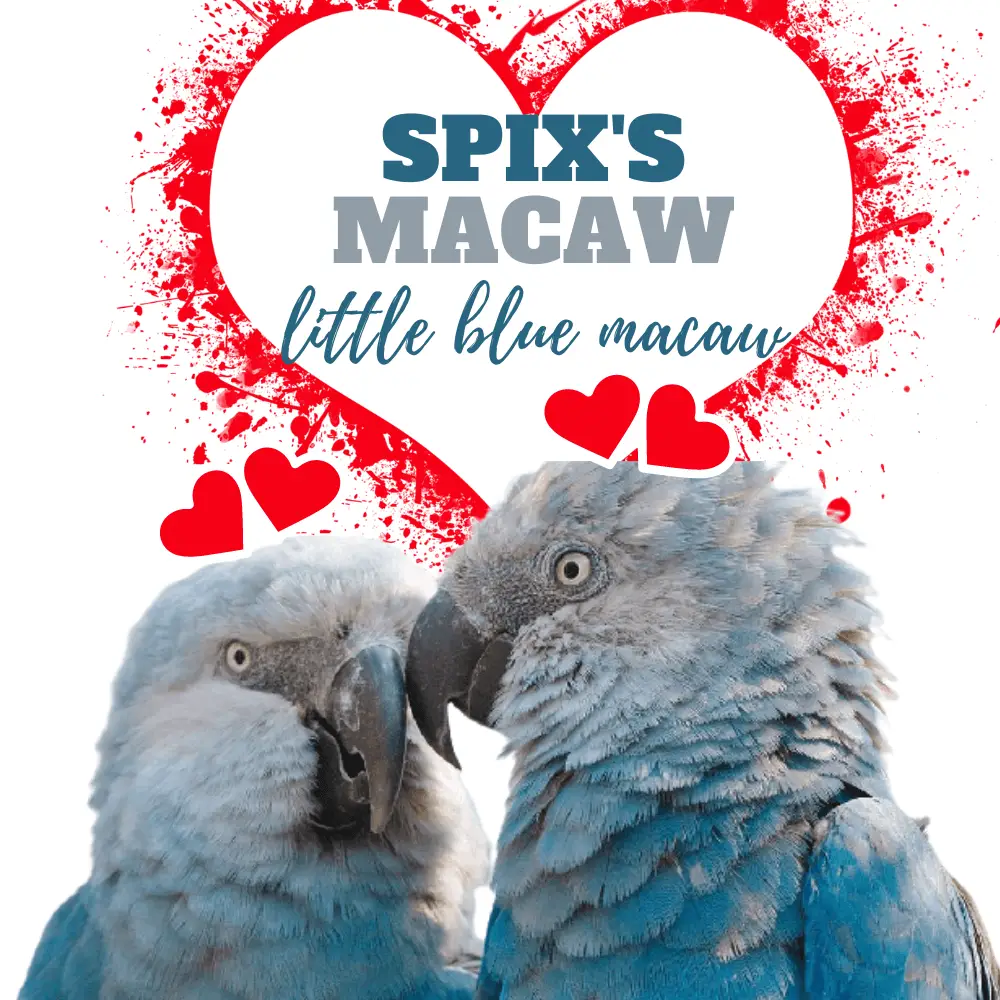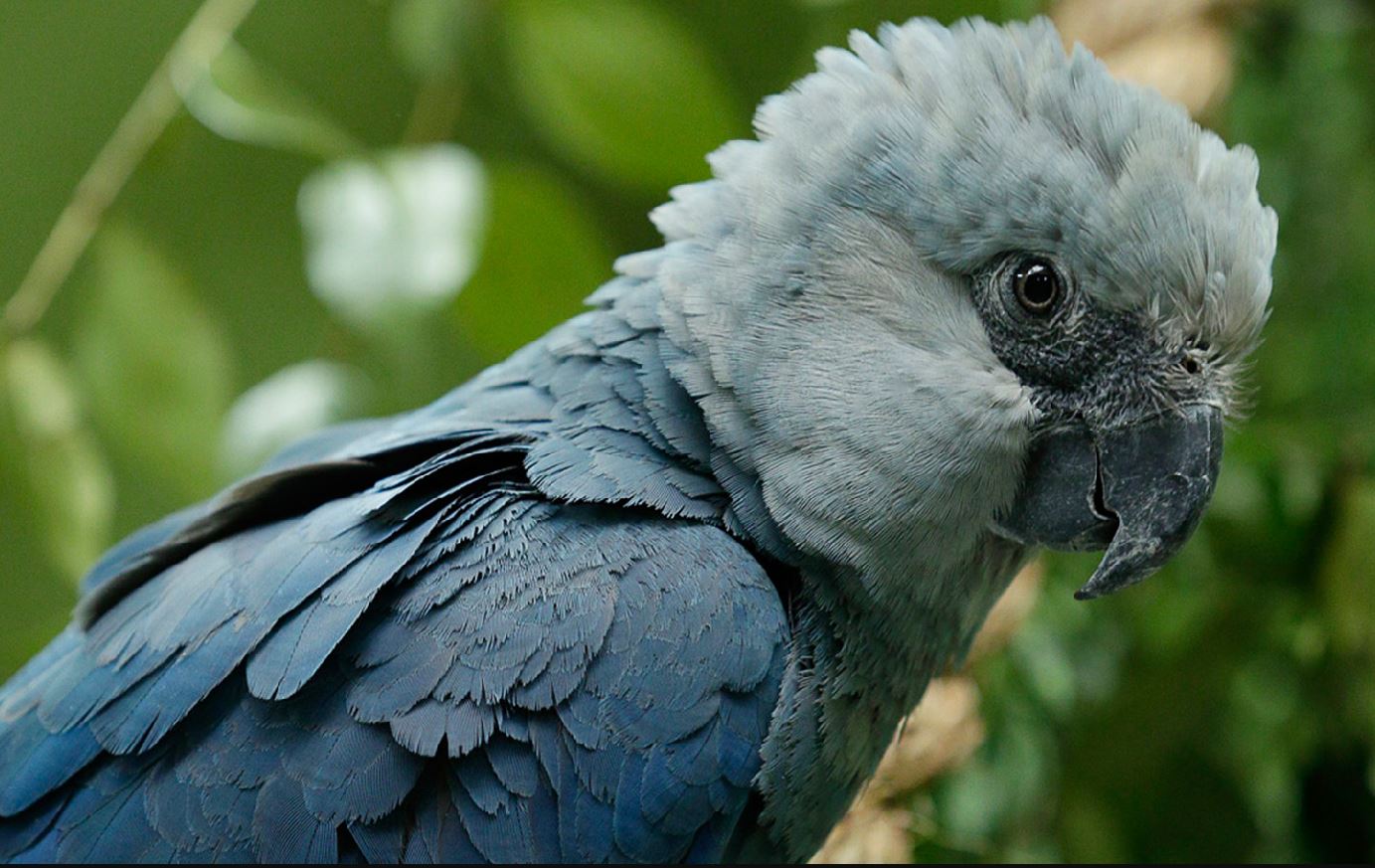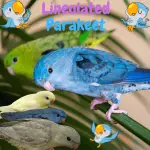
Blu, the star parrot of “Rio” is classified as an extinct species. Eight species of birds, including the Spix’s macaw, are officially classified as “extinct in the wild”.
The NGO BirdLife claims that the last specimen of Spix’s macaw in the wild died in the early 2000s. (Archive, April 2014, in a protected area in Germany)
It is a notice of disappearance that will sadden a whole generation of older children and parents: the hero of the cartoon “Rio” no longer exists in the wild. The 20th Century Fox film released in 2011 features the story of Blu, a Spix’s macaw (Cyanopsitta spixii) last male of his species who leaves the comfort of his life in captivity in the north of the United States for Brazil and the beautiful eyes of Perla.
In the dark rooms, after many twists and turns, they convolt and save their species. No happy ending in the real Amazon jungle. The NGO BirdLife announced in a statement that this species is now considered extinct in the wild. The NGO claims that the last specimen in the wild died in the early 2000s. This is due to deforestation, a dam, and poaching to fuel illegal trafficking.
“Historically, 90% of bird extinctions were small populations on remote islands. Our figures show that there is a growing wave of extinctions on the continent, driven by habitat loss due to intensive agriculture, drainage and logging,” said Stuart Butchart, Chief Scientist of BirdLife International.
Still 60 to 80 specimens in captivity
BirdLife conducted an 8-year study to determine the status of 51 critically endangered bird species. The association assessed the timing and reliability of observations of these specimens, the intensity of the threats, and a measure of the efforts that were made to recover them. This is how she was able to determine that there are probably no more Blu congeners in nature.
Seven other species have had their extinction confirmed or strongly suspected. This is the case of the masked Po-o-uli (Melamprosops phaeosoma). None of these small passerines in Hawaii have been seen since 2004. As for the blue star parrot of Hollywood, there are between 60 and 80 in captivity around the world.
A Belgian park has announced the creation of a Conservation and Reproduction Centre and has set up a programme to reintroduce these parrots into their natural environment in Brazil.

The star parrots of the movie Rio are back in the wild
In Brazil, the reintroduction in June 2022 of the Spix’s macaw, a parrot once considered extinct in the wild, is a success. Eight of them have just been released into the wild. A renaissance due in part to the cartoon Rio. Released in 2011, the film had made this bird with the blue coat, then in danger of extinction, known to the general public.
Threatened by the destruction of its natural habitat, poached to extinction for the impressive color of its blue-green plumage, the fate of the Spix’s macaw (Cyanopsitta spixii), a species of Brazilian bird belonging to the parrot family, did not bode well. But that’s without counting the intervention of scientists and conservationists who took up the challenge of saving the rarest bird in the world.
The ambitious scientific project to save the species, which emerged in 2018, made it possible to release eight macaws into their natural environment in Brazil in June 2022, according to the British daily The Guardian, in an article on July 10, 2022.
Poaching and destruction of its natural environment
This endemic parrot species was first discovered by a German naturalist in 1819, on the banks of the Sao Francisco River near Juazeiro in Brazil. The rarity of these parrots is already attested by the naturalist, which arouses the curiosity of collectors and environmental enthusiasts, who then seek to possess the rarest of all birds.
The territory of Caatinga is the natural living environment of Spix’s macaws. (Map: West-France)
“Over the next century, several explorers and ornithologists tried in vain to spot the Spix’s macaw in its natural habitat,” explains The Guardian. Local people then sold specimens to passionate collectors.
At the same time, the expansion of agriculture in South America has led to the overgrazing by goats and other livestock of the parrot’s original territory, an area of shrubs and thorn forests called Caatinga in northeastern Brazil, which covers about 10% of the national territory.
The Spix’s macaw did not resist the destruction of its natural environment, and at the dawn of the XXIe century, the species survives only in captivity.
According to the American Association for the Advancement of Science, a federation of scientific organizations that promotes cooperation, freedom and responsibility in science, only 39 captive birds were known in the world in 1996. Most of them are closely related: 21 of them come from a single pair of birds, raising concerns about their inbreeding.

Rio, the cartoon that popularized the species
The fate of the blue bird is nevertheless suddenly put on the front of the stage with the release of the cartoon Rio in 2011. This animated film, produced by 20th Century Fox and Blue Sky Studios, tells the story of Blu, a domestic Spix’s macaw, who is brought to Rio de Janeiro to mate with the only remaining female of the species. Rio and its sequel, Rio 2, have revealed to the public the danger of permanent extinction hanging over the species.
The hero of the animated film Rio, released in 2011, is a Spix’s macaw.
In 2018, the Association for the Conservation of Threatened Parrots (ACTP) set itself the challenge of returning the bird to its natural habitat.
Michel Temer, then president of Brazil, signed a decree establishing a wildlife refuge for macaws in the northeastern state of Bahia with the Pairi Daiza Foundation, of the Belgian zoological park of the same name, and the ACTP. A breeding program bringing together parrots from private collections is set up in various centers around the world, to perpetuate the species.
Eight macaws were released into the wild
“The project is going extremely well,” Tom White, a biologist with the U.S. Fish and Wildlife Service, the U.S. federal wildlife agency, told the Guardian on July 10, 2022.
The increasing sophistication of modern genetics has improved the macaw’s chances of survival in the wild, says the biologist, who is a technical advisor to Spix’s macaw rescue project. Scientific advances have made it possible to carefully match birds, to maximize their chances of reproduction. Artificial insemination has also facilitated the birth of macaws.
Thanks to these measurements, several hundred Spix’s macaws have been bred in captivity. Eight of them were released in Bahia, accompanied by eight Illiger macaws (Primolius maracana).
Since Spix’s macaws have lost some of their defensive instincts due to their captive breeding, the meeting of these two species gives the Spix the advantage of “associating with a lively and alert native species, which can show them where to get food and alert them to potential predators,” according to White.
The birds, which are carefully monitored by a team of scientists using radio transmitters, will all be of childbearing age soon. “It’s ambitious,” White says, “but so far things are going well.” Twelve birds are expected to be released next December.




















